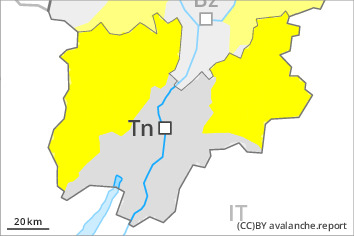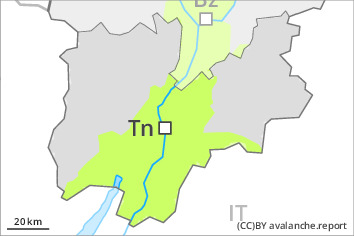
Danger level
 | 2600m |
|  |
|  | ||||
|  |
|  |

Wet avalanches are possible already in the late morning. Weakly bonded old snow is to be evaluated with care and prudence.
From late morning small and medium-sized wet avalanches are possible. In the course of the day the natural activity of wet avalanches will gradually increase, in particular on sunny slopes below approximately 2600 m, as well as on very steep shady slopes below approximately 2400 m.
Weak layers in the old snowpack can be released in very isolated cases by winter sport participants, especially on very steep shady slopes above approximately 2200 m, as well as on very steep east facing slopes above approximately 2400 m. The avalanches can be released in the weakly bonded old snow and reach medium size.
Experience in the assessment of avalanche danger is recommended.
Snowpack
dp.10: springtime scenario
dp.1: deep persistent weak layer
The surface of the snowpack will cool hardly at all during the overcast night and will already be soft in the early morning. The spring-like weather conditions gave rise to gradual and thorough wetting of the snowpack, especially on steep sunny slopes at high altitudes and in high Alpine regions, as well as on west, north and east facing slopes at intermediate and high altitudes. These conditions will bring about a weakening of the snowpack.
Faceted weak layers exist in the old snowpack, especially on shady slopes above approximately 2200 m, as well as on east and west facing slopes above approximately 2400 m.
Tendency
Outgoing longwave radiation during the night will be reduced in some case. Moist and wet avalanches are the main danger. Friday: In the evening as a consequence of new snow and wind there will be only a slight increase in the danger of dry avalanches.



